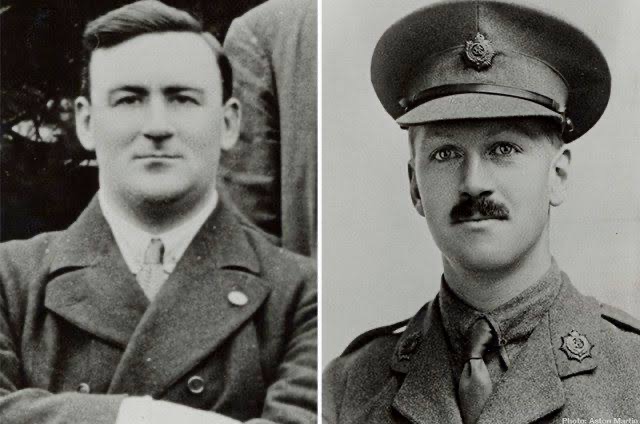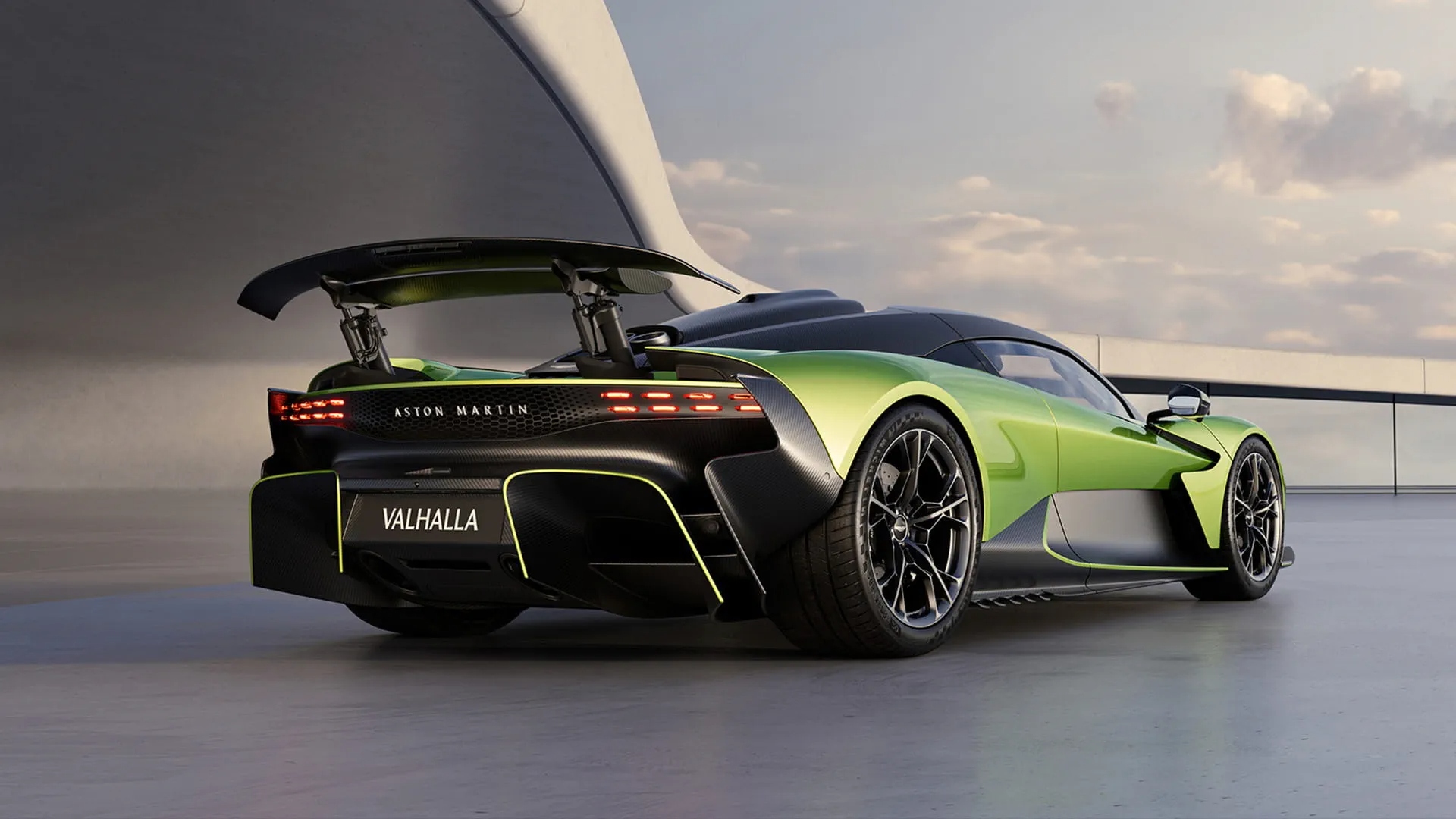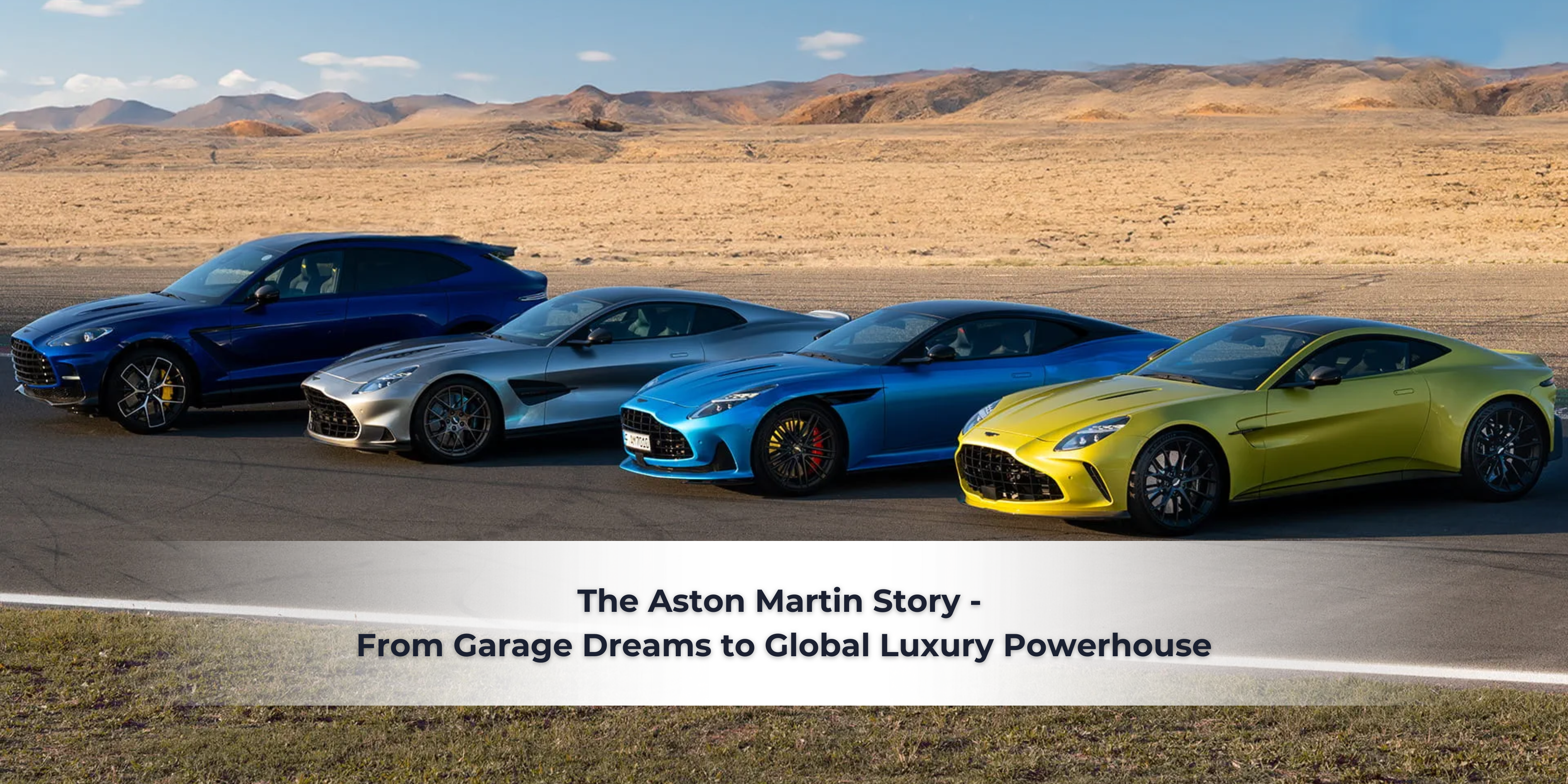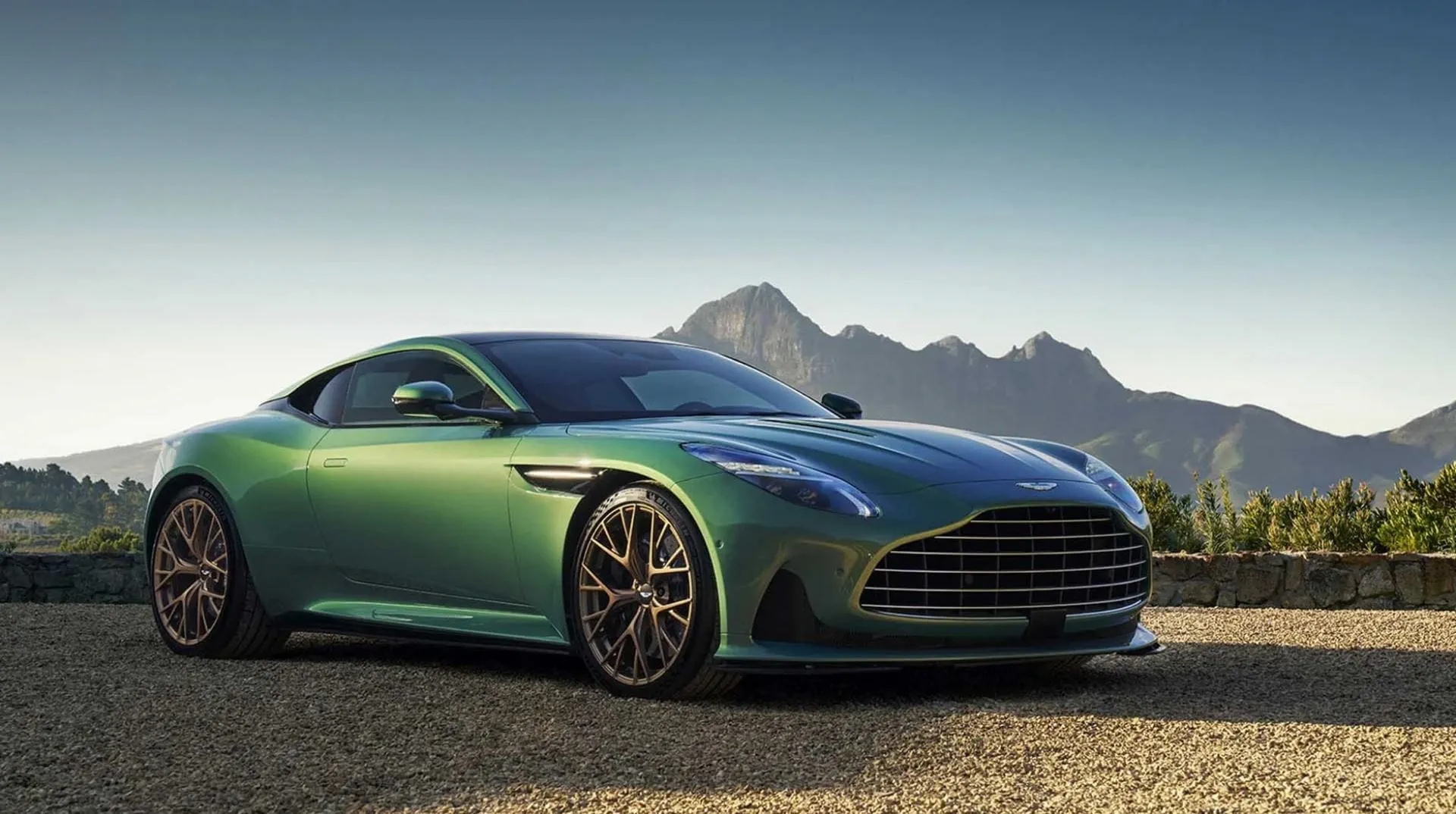Aston Martin began as a tiny British workshop in 1913 and, across more than a century, has become a symbol of handcrafted luxury, cinematic glamour, and rarefied performance. Its journey is a story of brilliant design, repeated reinvention, celebrity endorsement (hello, James Bond), high-stakes ownership changes, and an ongoing race to balance heritage with the realities of electrification and global markets.
The Spark: Two Men, One Garage, and an Idea (1913-1930s)

The Aston Martin story opens with Lionel Martin and Robert Bamford building cars for the sporting gentleman. Their focus was simple: lightweight chassis, nimble handling, and sporting pedigree rather than mass production. That DNA-performance by design became Aston Martin’s first and most enduring promise.
The brand’s earliest decades were artisan by nature, producing hand-built sports cars that appealed to drivers who prized character and capability over scale.
Reinvention Under David Brown – The DB Legend is Born (1947-1970s)
The name that defined Aston Martin for generations was David Brown. After acquiring Aston Martin (and soon after, Lagonda) in the late 1940s, Brown launched the immortal “DB” series of cars that married coachbuilt refinement with serious grand-touring performance. The DB2, DB4, and the iconic DB5 solidified Aston Martin’s iconic status.
The DB5, in particular, entered popular legend via James Bond and remains a cultural shorthand for refined danger. David Brown’s stewardship transformed Aston from a niche marque into a global luxury aspiration.
Up and Down: Survival Through Changing Ownership (1970s-2000s)
For much of its life, Aston Martin experienced cycles of daring product work followed by financial turbulence. Small manufacturers rarely enjoy steady fortunes, and Aston’s path included multiple ownership changes and restructurings.
Yet, those interruptions never erased the brand’s craft skills or its capacity to produce cars that stirred emotion-from the V8 Vantage’s muscular charm to the carbon-fibre craftsmanship of the later Vanquish.
Also Read: History of Porsche
New Millennium, New Muscle: The Gaydon Era (2003-Present)
The 2000s were a critical turning point. Aston Martin transitioned from its historic Newport Pagnell base, consolidating its global headquarters and production in a state-of-the-art, purpose-built factory in Gaydon, Warwickshire, starting in September 2003.
This move enabled major engineering investment, leading to modern models like the DB9, Vantage, and later the DB11 and DBS. The company embraced lightweight bonded aluminium structures and improved manufacturing tolerances, successfully blending high-tech engineering with the unique artisanship buyers expected from a boutique supercar maker.
Glamour and Reach: James Bond and Ultra-Exclusive Models

No brand-building story for Aston Martin is complete without Bond. The cinematic partnership amplified Aston Martin’s image worldwide. To maintain exclusivity and high margins, Aston aggressively capitalized on halo and bespoke programs.
- The flagship Valkyrie hypercar, developed with Red Bull Advanced Technologies, is limited to just 150 road-going Coupés (plus 85 Spiders and 40 AMR Pro models).
- The mid-engine hybrid Valhalla supercar is restricted to 999 units, with production scheduled to commence in the second half of 2025.
Also Read: History of BMW
The Modern Corporate Saga: Lawrence Stroll and F1 Investment
Despite strong product development, Aston Martin’s financial history has been volatile. A major inflection point arrived when Canadian businessman Lawrence Stroll and his Yew Tree Consortium stepped in.
- In January 2020, Stroll’s consortium invested £182 million to take an initial 16.7% stake in the company.
- Stroll became Executive Chairman and formalized the strategic link to motorsport, leading to the rebranding of the Racing Point team as the Aston Martin F1 Team in 2021. These moves professionalized operations and stabilized the balance sheet through subsequent capital raises.
The Electric Challenge: Partnerships and a Blended Powertrain
Like many legacy sports marques, Aston Martin’s pivot to electrification has involved strategic recalibration. Recognizing that ultra-luxury clients demand the best engineering, the company’s focus for the immediate future has been on plug-in hybrids (PHEVs) like the Valhalla.
- Aston Martin is targeting the launch of its first full Battery Electric Vehicle (BEV) around 2026.
- The company secured a crucial technical partnership with US-based EV specialist Lucid to supply advanced electric motors and battery technology for its next generation of pure-electric models.
Business Reality: High Margins on Limited Volume
Aston Martin today operates on a strategy focused on value creation over volume. Its financial health relies on maximizing the average selling price (ASP) of its limited production run.
- Aston Martin reported total wholesale units of 6,030 for the 2024 Financial Year.
- Crucially, the company achieved a record Average Selling Price (ASP) of £245,000 per vehicle, reinforcing its ultra-luxury, high-margin position. The company’s moves into F1 and bespoke personalization are all part of a coherent strategy to protect these high margins.
Also Read: History of Volvo
Final Verdict – A Living Luxury Legend
Aston Martin is neither a museum piece nor a mass marque; it is a living luxury brand that has repeatedly reinvented itself while preserving a core romantic idea: cars should move the heart.
The next decade will test whether that romanticism can be married to profitable, sustainable engineering. If recent investments, racing pedigree, and strategic technical partnerships pay off, Aston Martin could remain the British icon it has always promised to be-modernized, electrified, yet unmistakably Aston.


